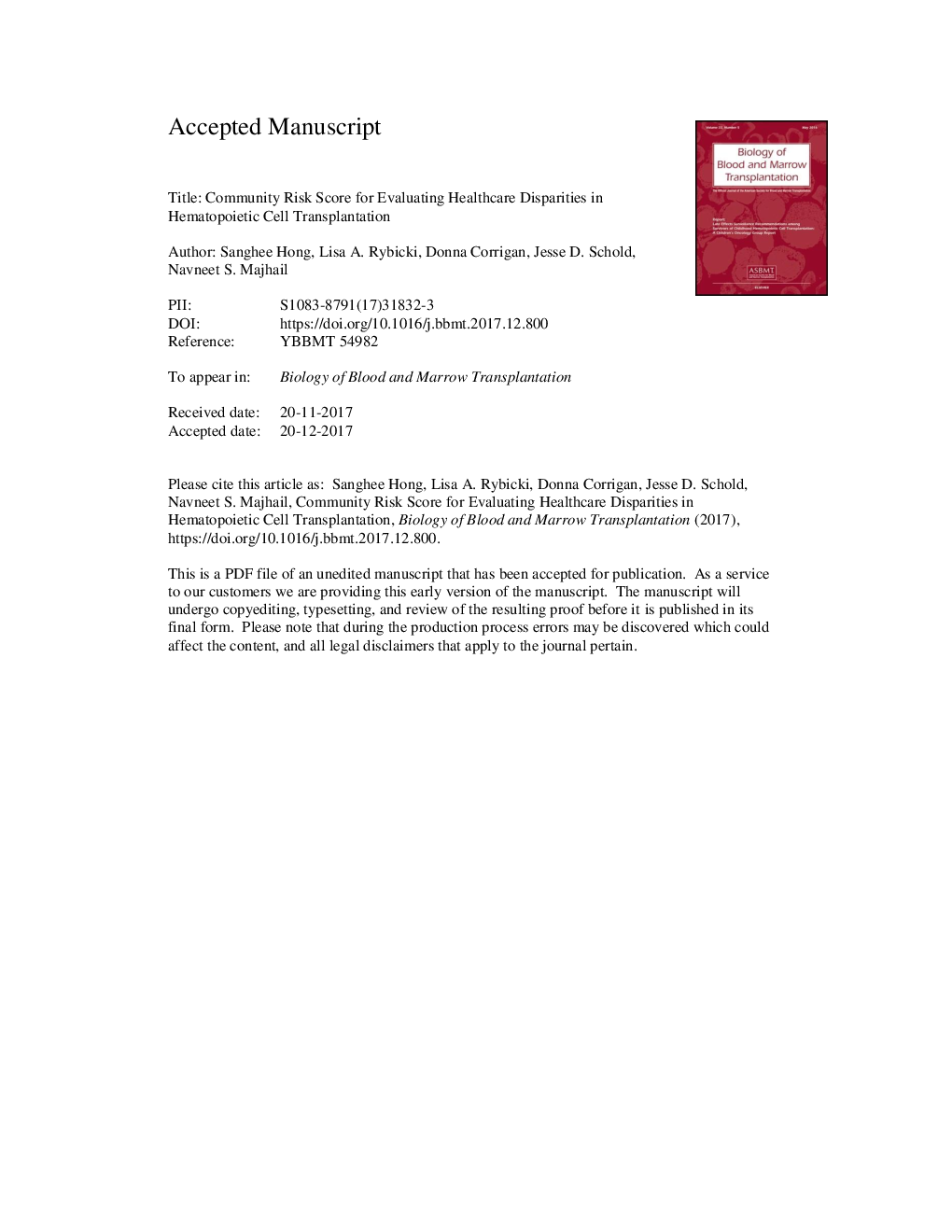| Article ID | Journal | Published Year | Pages | File Type |
|---|---|---|---|---|
| 8430096 | Biology of Blood and Marrow Transplantation | 2018 | 17 Pages |
Abstract
There is a critical need for tools to comprehensively describe disparities in hematopoietic cell transplant (HCT) recipients. We conducted a retrospective cohort study to evaluate a Community Risk Score (CRS) tool for this purpose. CRS included 10 community health indicators based on county or state of residence obtained from several secondary data sources and a composite score was assigned to each county (range 0 to 40), that was further categorized into six tiers (I to VI) with higher tiers indicating poor community health. CRS was assessed for 509 allogeneic and 1033 autologous HCT recipients from 2003 to 2013. Our cohort represented allogeneic and autologous HCT recipients from 300 and 431 unique ZIP codes from 99 and 125 counties in 15 and 16 states, although 86% and 90% patients were from Ohio, respectively. A greater proportion of patients had adverse individual community risk indicators in higher-risk tiers (P < .001 for trend for all). In multivariable analysis, clear trends toward association of CRS with outcomes were not observed. For autologous HCTs, Tier III has higher risks of relapse mortality (hazard ratio [HR] 2.2, P = .02) and all-cause mortality (HR 1.8, P = 0.03). In conclusion, CRS was able to categorize patients into groups representing greater levels of health care disparities. We did not see a clear association between CRS and transplant outcomes, although our cohort was limited to a relatively small group of counties. Community-based risk score model may serve as a tool for evaluating disparities in HCT recipients, but its validation in a nationally representative cohort of patients is needed.
Keywords
Related Topics
Life Sciences
Biochemistry, Genetics and Molecular Biology
Cancer Research
Authors
Sanghee Hong, Lisa A. Rybicki, Donna Corrigan, Jesse D. Schold, Navneet S. Majhail,
